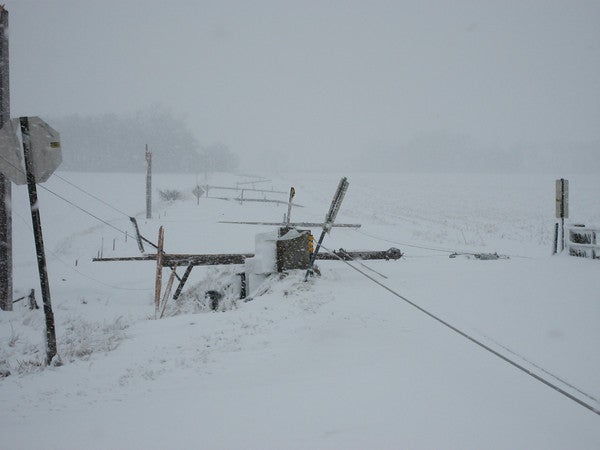With severe storms and high winds, there is always the likelihood of downed power lines. Power lines that provide safe and efficient electrical power to your home everyday can now become a silent killer. Whether the power to your house is on and functioning either during or after the storm passes, beware of the power lines if you venture out.
A downed power line that is not hissing, arcing and writhing violently does not look dangerous nor does it give any indication of being dangerous. It's never obvious that a power line is energized.
Even if your power is out and you see that the power lines are down, don’t think that it is safe to move a downed line. These power lines could become re-energized at any time! Never assume anything when working around power lines. Instead, assume that they are live and that electrocution dangers exist.
The electricity in a power line always seeks a path to the ground. This path might include a tree, a vehicle, or a fence, all of which then become energized.
The ground, too, becomes energized once electricity reaches it. It can spread over a wide area, like ripples in a pool of water, gradually lessening up to zero at about 33 feet from the center. If the ground is wet, the energy may spread further than 33 feet.
Big Horn REA recommends the following things:
- Treat downed power lines, and anything in contact with them, as energized.
- Park away from the power lines.
- Stop traffic and keep people away, at least 33 feet from the fallen power line.
- Don't become a victim yourself by touching a downed power line, even with a dry stick or piece of hose.
- Call the power company immediately, to ensure the power line will not be reactivated until everyone is safely out of the way.
- Do not approach the scene until a power company representative confirms it's safe.

